How to cook an Egg in an electric Kettle
There are not many good reasons why you would want to use a variable temperature kettle to boil your morning egg.
One of them might be that you are not talking to your smaller pots anymore because you had a fight with them the previous night (small pots can be slightly petty).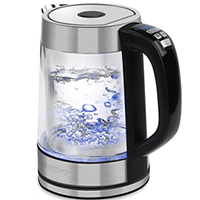
Or, you woke up this morning, and it felt far too bourgeois to use the egg cooker. You wanted to live a little on edge and decided to use a primitive kettle to produce your beloved morning egg.
It made you feel rebellious and alive again.
Another scenario would be to find yourself in the middle of nowhere with just a temperature controlled kettle filled with water, your raw morning egg, a power socket and mismatched socks.
Nothing is better to come to terms with an odd and bizarre situation than enjoying a sliced, peeled or beheaded egg.
Whatever it might be, here is:
How to cook an egg in a kettle

Ingredients:
- egg(s)
- electric water kettle (with temperature control and keep-warm function)
- water
- about 20-25 minutes time
Procedure:
There are two ways to approach this:
1. The cold water procedure
Place the egg in the kettle with cold water and turn it on.
Wait until the water boils and the kettle turns itself off.
Activate the keep-warm function (more info about this function here) and wait between 15-20 minutes.
2. The hot water procedure
Bring the water to the boil, activate the keep-warm function and lower the egg into the kettle.
Use a big (wooden) spoon and be careful not to burn yourself.
Wait between 15-20 minutes.
Drain the kettle and make sure you don’t damage or throw out the content while doing so.
Enjoy your well-deserved egg.
Both methods work
The first procedure is safer since you don’t have to deal with boiling water. It also requires slightly less time because the egg starts already cooking when the kettle heats up.
A disadvantage could be, that water boils violently for about 10-20 seconds before the automatic shutoff kicks in. During this time the egg is thrown around in the narrow kettle and might crack. You could end up with a very messy kettle and a drained, sorry looking morning egg.
To avoid the turbulences, turn off the boiling process as soon as it starts and activate the keep-warm function.
Also preferred method for hard-boiled eggs (more about this below).
Procedure 2 is a more measured approach. Get the egg into the hot water, set the timer and you are done.
It is also the preferred method to produce soft-boiled eggs (see below for more information).
The choice of procedure depends on your egg preferences and available time.
Speaking of time …
The given duration to produce an edible egg varies from kettle to kettle.
First, there is the boiling time. Some kettles boil water quicker than others depending on model (fast boiling: T-fal Balanced Living, slow boiling: Ovente) and wattage (What is wattage? For more info see here).
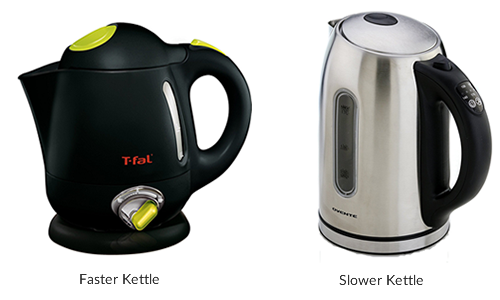
Secondly, the keep-warm function. It means that the device is keeping the water temperature close to the initially set temperature. For example, if set to boiling the kettle will maintain a close-to-boiling temperature in “keep warm” modus. This function works slightly different in each kettle which will influence the cooking time.
Thirdly, your egg preference. Is it soft-boiled, hard-boiled or somewhere in between?
For the soft-boiled version, you should drop the egg into hot water just after the bubbles have settled down. Doing so allows for a firm white but a soft and gooey yellow (see above, procedure 1).
A hard-boiled egg benefits when the cooking process starts with cold water. This way the white and yolk cook perfectly together.
Fourthly, the size of the egg and how many are in the kettle.
Rule of thumb I:
The bigger the size, the longer the cooking time.
Don’t overcrowd the kettle.
Cooking two, maybe three eggs in one go is the absolute maximum.
Rule of thumb II:
The more eggs you have in the kettle, the longer the cooking time.
To find out the exact time it takes to boil an egg to your liking, in your type of kettle is something you have to try out yourself.
To give a rough idea, you need about 15 minutes to produce a soft-boiled egg and about 20 minutes for a hard one.
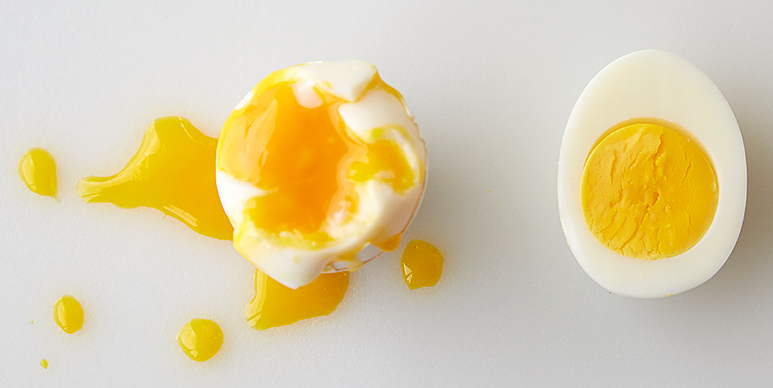
Advantages of Kettle-boiling
Use just enough water to cover the eggs.
Don’t use the egg water afterwards for anything else, like tea, coffee or cooking your vegetables. Eggshells contain calcium carbonate which makes water hard. The shells might also be contaminated.
Always rinse the kettle with clean water after an egg-cooking session.
Advantages of boiling eggs in a kettle:
– Excellent heat distribution to evenly cook the egg(s).
– It is quicker to boil water in a kettle than in a pot.
– It is safe. The closed kettle is easy to handle and can be placed out of reach for children.
– You can do it anywhere. All you need is – see ingredients above.
– It is a bit unconventional – you might get a kick out of it.
Disadvantages:
– It takes a bit longer than cooking the egg in a small pot.
– You might end up with a messy kettle if things go wrong.
Whichever method and egg consistency you prefer you should never cook an egg straight out of the fridge.
They might crack more easily when you put it into hot water.
Eggs don’t need to be kept in a fridge in the first place. The next time you buy them pay attention where the supermarket stores their eggs. It will not be in a fridge.
One last tip: you get the best results with a fresh egg.
Rule of thumb III:
The fresher the egg, the better the taste and consistency.
Happy egg cooking
The Kettle Whistler
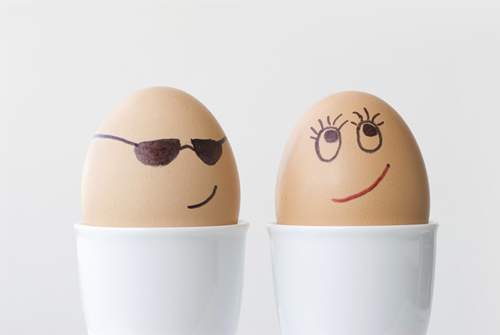
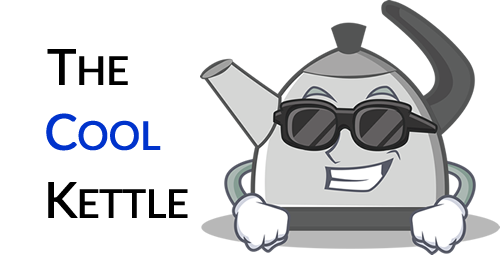
1 Comment
kettle whistler
Please leave your comments and suggestions here.